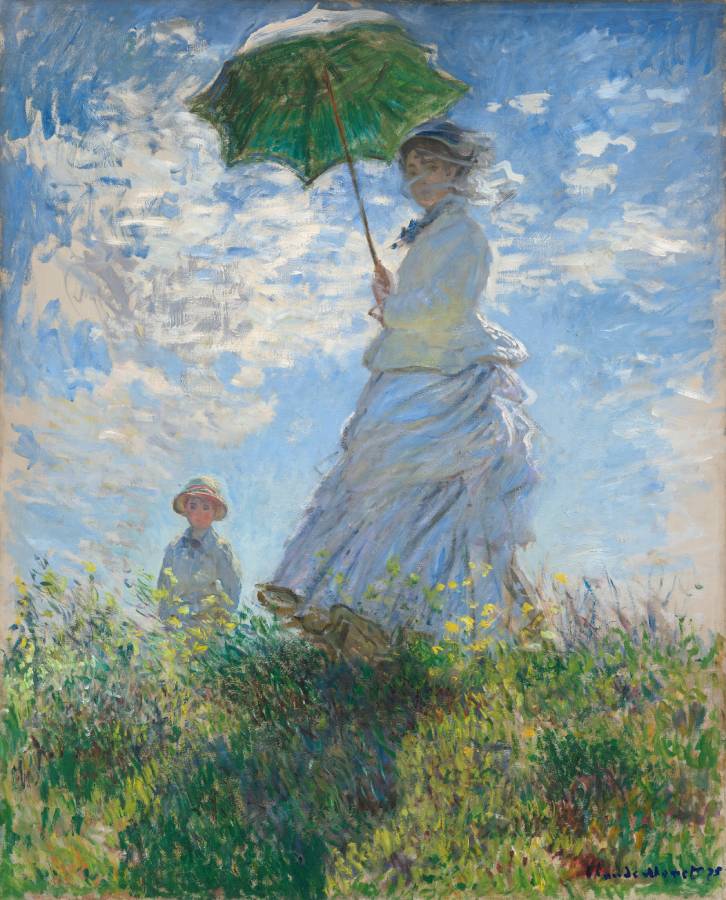Monet, Claude (1840-1926)
La Promenade ou La Femme à l’ombrelle (The Walk, or Woman with a Parasol – Madame Monet and Her Son)
1875
Oil on canvas, 100 x 81 cm
National Gallery of Art, Washington
With Manet‘s assistance, Monet found lodging in suburban Argenteuil in late 1871, a move that initiated one of the most fertile phases of his career. Impressionism evolved in the late 1860s from a desire to create full–scale, multi–figure depictions of ordinary people in casual outdoor situations. At its purest, impressionism was attuned to landscape painting, a subject Monet favored. In Woman with a Parasol – Madame Monet and Her Son, his skill as a figure painter is equally evident. Contrary to the artificial conventions of academic portraiture, Monet delineated the features of his sitters as freely as their surroundings. The spontaneity and naturalness of the resulting image were praised when it appeared in the second impressionist exhibition in 1876. Woman with a Parasol was painted outdoors, probably in a single session of several hours’ duration. The artist intended the work to convey the feeling of a casual family outing rather than a formal portrait, and used pose and placement to suggest that his wife and son interrupted their stroll while he captured their likenesses. The brevity of the moment portrayed here is conveyed by a repertory of animated brushstrokes of vibrant color, hallmarks of the style Monet was instrumental in forming. Bright sunlight shines from behind Camille to whiten the top of her parasol and the flowing cloth at her back, while colored reflections from the wildflowers below touch her front with yellow. From low on a hillside, we look up at a light-skinned woman and boy standing in tall grass against a sunny blue sky in this vertical painting. The woman stands at the center of the composition, and the moss-green parasol she holds over her head almost brushes the top edge of the canvas. Her body faces our left but she turns her head to look at us. Her long dress is painted largely with strokes of pale blue and gray with a few touches of yellow. Her voluminous skirts swirl around her legs to our left. She holds the parasol with both hands, and her brown hair is covered with a hat. Long strokes of white paint across her face suggest a veil fluttering in the breeze. The tall grass she stands in is dotted with buttercup yellow and plum purple, and she casts a long diagonal shadow along the grass toward us. The young boy seems to stand on the other side of the hill, since the grass and flowers comes up to his waist. He wears a white jacket and pale yellow straw hat. His arms are by his sides, and he seems to look off into the distance to our left. A sunny blue sky behind the people is dotted with bright blue clouds. The painting is created with loose brushstrokes throughout, and they are especially choppy in the clouds. The artist signed and dated the painting in royal-blue letters at the lower right: “Claude Monet 75.” (NGA)
See also:
• Argenteuil (France) | Doncieux, Camille (1847-1879) | Monet, Jean (1867-1914)
